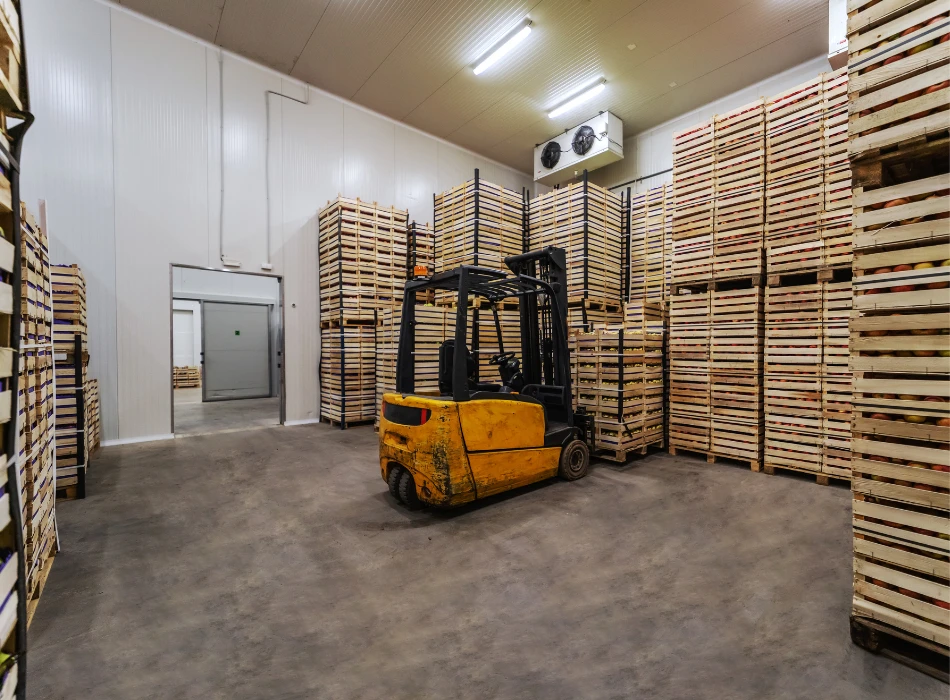Best Practices for Regular Cold Storage Maintenance to Avoid Downtime
Discover best practices for regular cold storage maintenance to avoid downtime. Learn essential tips for cleaning, inspecting seals, monitoring conditions, and more to ensure efficient operations.

Maintaining your cold storage facility is essential for ensuring product quality, operational efficiency, and minimizing downtime. Regular maintenance not only prolongs the lifespan of your equipment but also prevents costly failures. Here are some best practices for maintaining your cold storage system effectively.
Routine Cleaning and Organization
Overview: Keeping your cold storage area clean and well-organized is fundamental. Regularly clean the interior, removing spills, debris, and expired products. A tidy environment improves access and prevents airflow obstructions that can strain the cooling system.
- Daily Tasks: Clean floors and surfaces, check temperatures, and organize stock.
- Weekly Tasks: Clean door gaskets, handles, and external walls.
- Monthly Tasks: Conduct a thorough cleaning of internal surfaces and check for expired goods.
Inspect Door Seals and Gaskets
Overview: Effective cold storage relies on airtight seals. Regularly inspect door seals and gaskets for wear, damage, or gaps. Replacing damaged seals promptly helps maintain consistent temperatures and reduces energy consumption.
- Action Item: Schedule regular checks to ensure seals are intact and functioning properly, ideally on a monthly basis.
Monitor Temperature and Humidity Levels
Overview: Maintaining the correct temperature and humidity levels is critical for product preservation. Use reliable monitoring systems to ensure conditions remain within specified ranges.
- Action Item: Implement a digital monitoring system that provides real-time alerts for any deviations from set parameters.
Schedule Regular Maintenance Checks
Overview: Routine maintenance checks by qualified technicians are vital for identifying potential issues before they escalate into major problems. These checks should include inspections of compressors, fans, evaporators, and other critical components.
- Action Item: Establish a maintenance schedule that includes daily, weekly, monthly, and annual tasks to ensure all systems are functioning optimally.
Upgrade to Energy-Efficient Lighting
Overview: Switching to energy-efficient lighting reduces heat generation within the cold storage area and lowers energy consumption. LED lights are an excellent choice as they consume less energy and have a longer lifespan compared to traditional bulbs.
- Action Item: Replace existing lighting with LED fixtures to enhance energy efficiency while maintaining visibility in storage areas.
Emergency Preparedness
Overview: Have a contingency plan in place for power outages or system failures to prevent product spoilage during unforeseen events. Backup power sources and emergency protocols are essential components of your maintenance strategy.
- Action Item: Develop an emergency response plan that includes backup power solutions and staff training on procedures during outages.
Check Refrigeration Components Regularly
Overview: The refrigeration system is the heart of any cold storage facility. Regularly check components such as compressors, condensers, evaporators, and fans for optimal performance.
- Action Item: Perform daily checks on refrigerant levels and inspect for any signs of leaks or inefficiencies.
Conclusion
Implementing these best practices for regular cold storage maintenance will help you avoid downtime while ensuring the quality of your stored products. By focusing on routine cleaning, inspecting seals, monitoring conditions, scheduling maintenance checks, upgrading lighting, preparing for emergencies, and regularly checking refrigeration components, you can maintain an efficient cold storage operation that meets industry standards.